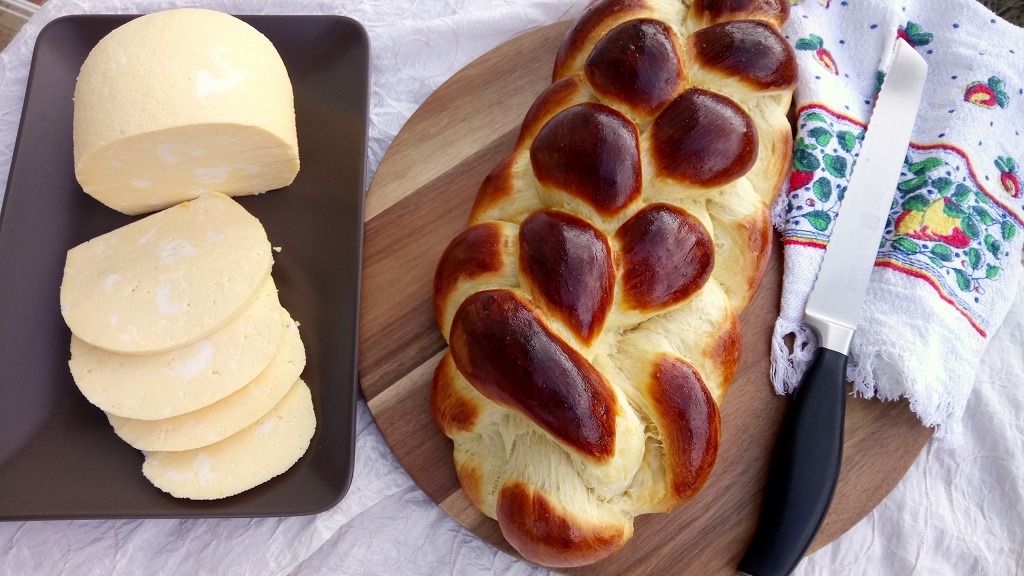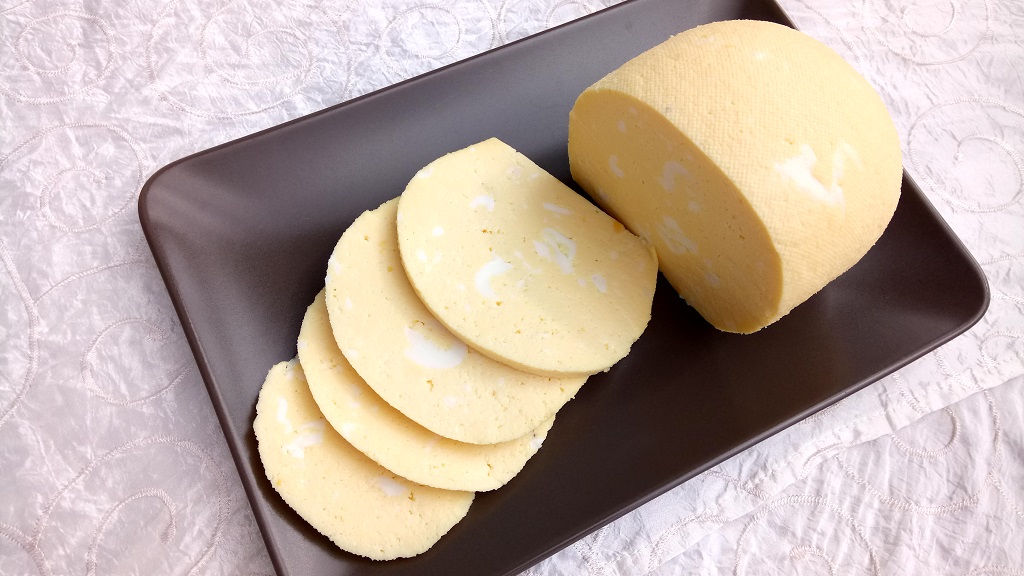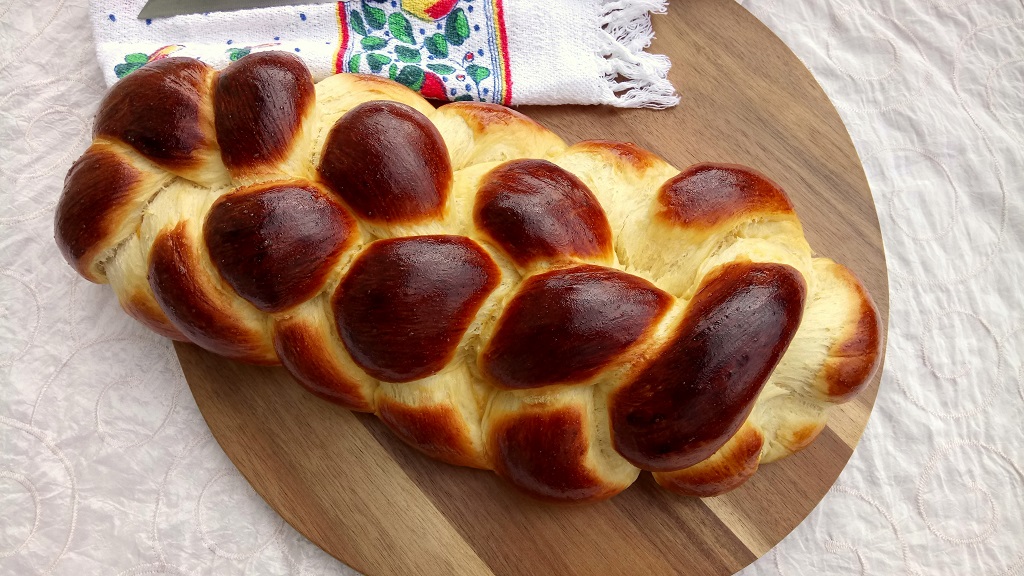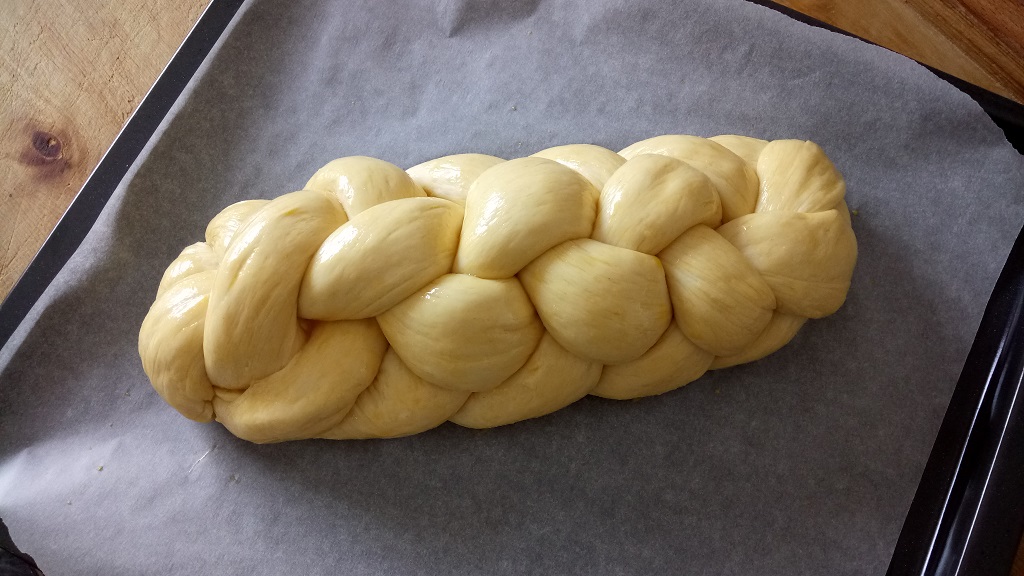The Easter table can’t be left without cake, so I brought you some delicious recipes. In addition to cooked ham, we really like sweet, soft phosphote cakes. But if we’re just making a plain salt cake, it’s perfect for it. For dessert, guests can enjoy sweet cakes filled with all kinds of delicious treats. And you can decorate the smooth wicker cake with a little frosting to make it look even better and be the decoration of the festive Easter table.
The Easter table is unimaginable without yellow curd and wicker cake, just as ham, sausage and horseradish can’t be missed. For those who do not know it, it is worth making it once, because a very special combination of flavors is sweet yellow curd, fresh braided cake, salted smoked ham, sausage, spicy, grated horseradish and fresh spring onions or month-long radishes. If you know him, I’m not going to show you anything new with the yellow curd recipe. But for those of you who haven’t met him, it’s worth a try. In addition, in the post below, I will introduce you to a few steps to make an excellent Easter cake.

Easter yellow curd
Yellow curd, also known as sweet curd, is a tradition in our country, as one half of my family comes from Szabolcs, where this delicacy is closely linked to easter folk customs. It’s also so special because it’s only eaten once a year at Easter. You can read more about these traditions here.
The basic rule of thumb is that as many ounces of milk as you need, as many eggs as you need. I’ve heard of people making it salty with green spices, but I’ve known it sweetly since I was a baby, with raisins, like my grandma makes it. I just missed the raisins because Ati my son doesn’t like them, but he’s really good at it.

Easter yellow curd (basic recipe)
1 l milk (if possible homemade)
10 eggs
5 tbsp sugar (may vary to taste)
1 handful raisins (omitted)
1 pinch salt
Preparation:
Put the milk in a large pot rinsed with water, add the sugar, salt and rinsed raisins. Whisk the eggs one at a time, then mix them all in a large bowl with a fork (if anyone wants to mosaic, you don’t need to completely whisk them), pour them into the milk and stir constantly over a slow heat, cook the eggs in the milk. Don’t leave him alone, because he tends to burn off at the bottom of the pot.
When we see that the egg is cooked like cottage cheese and the whey has been ethiced from the milk, this makes it water-like, then we take a piece of pure gauze, curtain material or a thickly woven tea towel, laid in a filter, spoon the egg into it and tie the four corners slightly round, then hang it on a wooden spoon, stick it in a tall pot and leave it in a cool place to drain the sweet whey completely.
After it has driped, put it in the fridge until served. When served, slice and serve with cooked ham, sausage, horseradish and cake.
Wicker cakes
Braided cakes are also a must-have element of the Easter table, so I make a delicious piece of phosphoid every time. I don’t like pouring sweet whey out of yellow curd (it used to be, traditionally, the family drank it on Easter morning) because it’s perfect for cake instead of milk. But it can also be used not only for cake dough, but also for cake puffs and poppy seed cocoons.

for wicker cakes:
60 ounces fine flour
2.5 ounces fresh yeast
3 dl sweet whey/milk
3/7 ounce (if not made from whey) sugar
1 egg yolk + 1 for lubrication
5 ounces lukewarm butter
1/2 untreated lemon grated zest
1 tsp vanilla extract
1 mocha spoon of salt
Preparation:
Crumble the yeast in half of the whey and run it up in a few minutes.
Sift the flour into the bowl, add the egg yolks, sugar, salt, grated lemon zest and yeast, then start to add the remaining whey to the dough. When the dough is assembled, work the lukewarm butter into it and knead until the dough is shiny and blisters, detaching from your hands and the wall of the dish. It is then shaped round, lightly floured at the bottom of the bowl and the dough is doubled, about 100 ml. In 30 minutes.
Once the dough has risen, cut into 6 equal parts on a lightly floured surface and curl each into round small loaves. Cover and, after a few minutes, roll them into rods of equal length.

ing
The help I see here for spinning, I admit, is that I also need the rifle regularly, as I don’t make it every day, so I tend to forget how it goes. Once the cake is braided, place on a baking sheet lined with baking paper and spread with an egg yolk, diluted with a tablespoon of milk. Allow to get up for another 15-20 minutes before putting in the oven.
Bake in a preheated oven at 180 degrees for 35-40 minutes, while watching if the top is very baking, cover with foil, and if the bottom is very low, place a baking tray under it. Refrigerate the finished cake on a grate. Because it’s a big cake, so if it’s too much for someone, you can make half the amount of pasta or fry the dough into two smaller cakes.
One or two important things to keep in mind when working with pasta:
- The structure of the dough, the more beautiful it will be, the more air we put into it. Therefore, it is important to thoroughly develop the dough.
- They used to say that pasta is worked out when the water is dripping from the beam, which is our forehead.
- The ingredients should preferably be worked at room temperature, because cold ingredients slow down the work of yeast.
- Mix the salt thoroughly with the flour before adding the yeast, because in contact with the salt, it inhibits its hatching effect.
- The same is true of a lot of sugar, so just add a pinch to the milk, enough to make the yeast run up.
- Fat also slows down the growth of yeasts, so the more fat in the dough, the longer the hatching time lasts.
- In our kitchen, where we make the pasta, it should not be cold or draughty, because it also harms the dough.
- For your cake to be phosphate, it is essential to properly develop the dough. When braided, roll the rods well for the braids before spinning.
If you want good quality pasta, buy good ingredients for it, preferably flour enriched with wheat germ.
Among the flours I use: Wheat flour with wheat germ – BL 55. Make sure the eggs are of good quality, not from caged housing, fresh homemade milk and butter can be found in all market halls, or you can buy them from a car selling mobile homemade milk. Instead of refined granulated sugar, use brown cane sugar. Caution brown sugar (which is refined sugar tinted with molasses) is not equal to cane sugar! I always use butter, never margarine.
Salty, phosphate cakes made of whey
As I have already written in the recipe for walnut rolls, I often make cottage cheese at home, so there is always whey at home, which is preserved after the curd has been dripping. This is usually used freshly to make bread or cake, as it works wonders with kale dough.
However, if I make a larger dose, I will put it in the freezer in 2-3 dl portions and use it from there when it is not fresh. It makes the pasta incredibly crumbly, it doesn’t crumble at all, and it’s wonderfully soft and springy even the next day. But whey is not only good for pasta, it is also excellent for making homemade strudel.
This savoury cake can be great for the upcoming Easter festive table. Alongside ham, sausage, yellow cottage cheese and grated horseradish. And his recipe, the same bread recipe as the one I bake regularly, with so many changes, I replaced the 3 dl water with the whey.
If you don’t have whey, prepare it with a mixture of 50/50 water and natural yoghurt/kemir.
You can enrich the cake with chopped fresh or dried spices such as rosemary, basil, bear onions. You can add a little extra flavor with a little grated garlic.

Ingredients:
50 dkg BL 80 bread flour
1 sachet dried yeast/or 2,5 dkg fresh
3 dl whey (left over from making homemade cottage cheese)
0.5 dl oil
1.5 teaspoons salt
2 teaspoons sugar
Preparation:
Knead medium-hard dough from the ingredients of the pasta. Work well, then double it in a lukewarm place, covered with a clean cloth, for about 30 minutes.
Once the dough is cooked on a floured board, work it gently. Then divide it into three equal parts. The parts are intertwined one by one, twisted into the same long rods as the cake. Floured bread in the form of a clean cloth, double in 25-30 minutes.
While the dough is hatching, preheat the oven to 190 degrees. And put a small bowl full of water in the bottom to make the oven humid. Because it’s going to make the pasta grow nicely when you’re baking.
Once the dough has properly hatched, the top is smeared with lukewarm water. In the preheated oven, first for 10 minutes at 200 degrees. Then back to 190 degrees, bake for 40-45 minutes until nice brown. When it’s fried, leave to cool completely on a grate.
